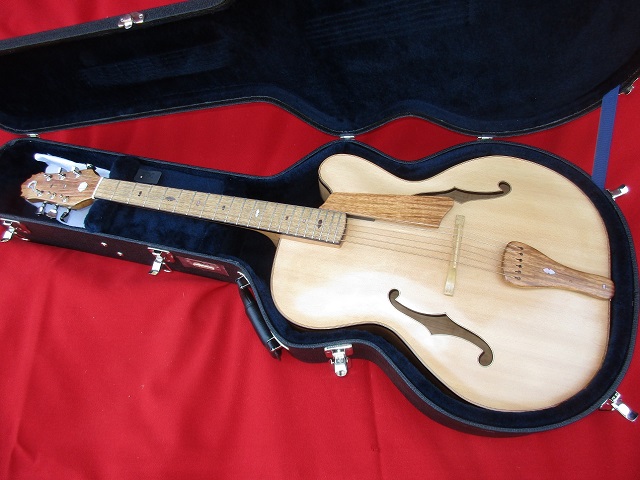 |
Open the case and you may agree, the lighter features of persimmon, koa and the spruce top inspired the name "Blondie." The persimmon has near the same density as Indian rosewood, but works easier and is not oily for finishing. Body and fingerboard are bound with Indian rosewood and maple/walnut purfling. F-holes are purfling bound. One-piece bridge delivers action and art with maximum tone. The spruce top is over 35 years air dried. The persimmon came from my property. The black cherry and curly red maple were harvested local. All three milled here at my home and dried in my solar kiln.
Some other links at the Hollow Road Guitar Shop, Chuck's Instrument Website:
|
| Below: Features like the elaborate crown, mother-of-pearl inlay and three-piece neck bring art to function. The head is attached with a scarf joint. A half-round volute helps with feel, strength and offsets the nearly invisible scarf joint. |
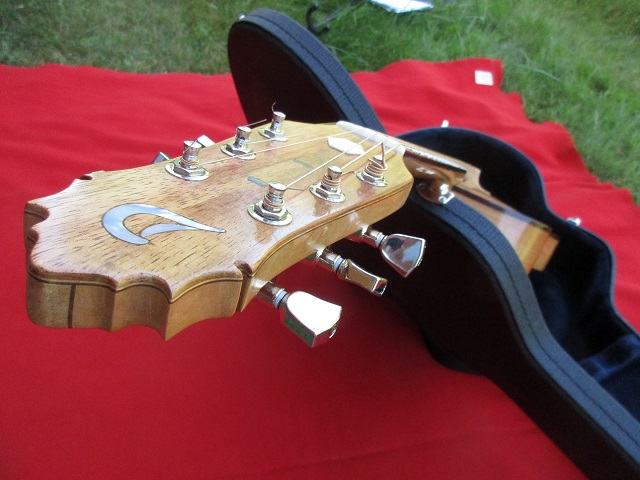 |
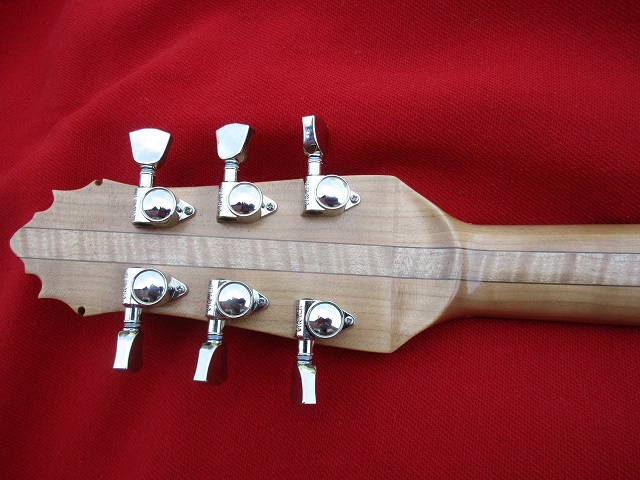 |
| Below: Black cherry sandwiches curly red maple, with walnut purfling accents for the back. Black cherry sides. Indian rosewood bindings with walnut-maple purfling accent all around. All wood is selected for the best of quartersawn grain. A Tru Oil gun varnish gives a softer finish and feel than lacquers. Read more about this finishing technique here: Finishing with Tru Gun Stock Oil
The koa tail-piece is three laminates thick, with book matched halves to the show. The mother-of-pearl inlay theme begins here and continues through bridge and fingerboard to the face. Bear claw in the sitka spruce adds unique character to the top. Reused ivory protects the tail while Sarconi strap holds this end together. |
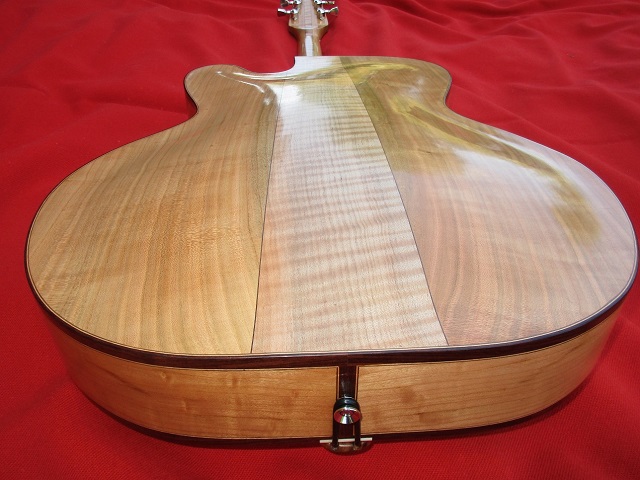 |
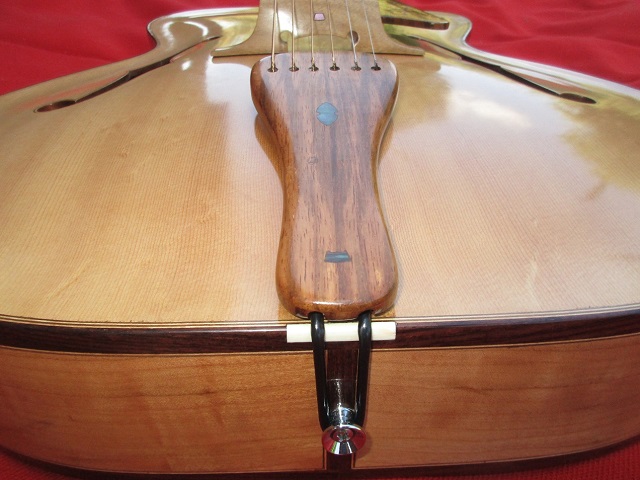 |
| Below: Bending the rosewood bindings and purflings for the cutaway continues to be the most challenging process for me in building a guitar. Others will defer to plastic bindings and omitting the purflings. But the purfling stripes are important to the overall effect of the artwork as they accent the entire perimeter of the body. Note the lines as they complete to the tail in the pictures above. And the work and feel of the wooden binding shows to those who know what they are looking for. It is well worth the effort to me.
The mother-of-pearl inlay was made from a couple of buttons with a bit of darker colors here and there. The arcs of the pieces follow the arcs of the buttons. Be sure to see my other instruments for more elaborate inlay and a little bit of "how to" at DragonJewels: Beauty of the Beast |
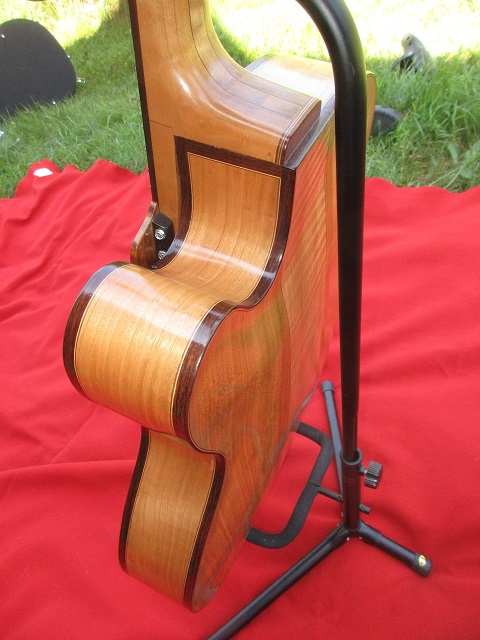 |
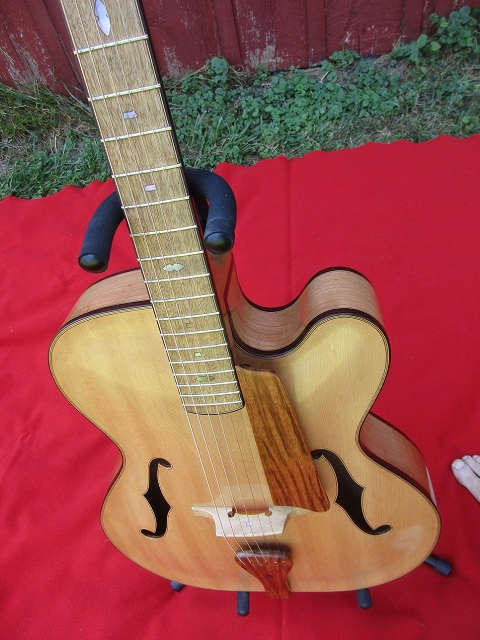 |
| Below: Another look at the face. Mother-of-pearl on koa. The hex piece is a button and stands in relief on top of the faceplate. The "D" swoosh may become my permanent logo.
Note the rosewood bound fingerboard, double purfling sets of walnut and maple in the top, koa finger rest and mother-of-pearl fret markers. |
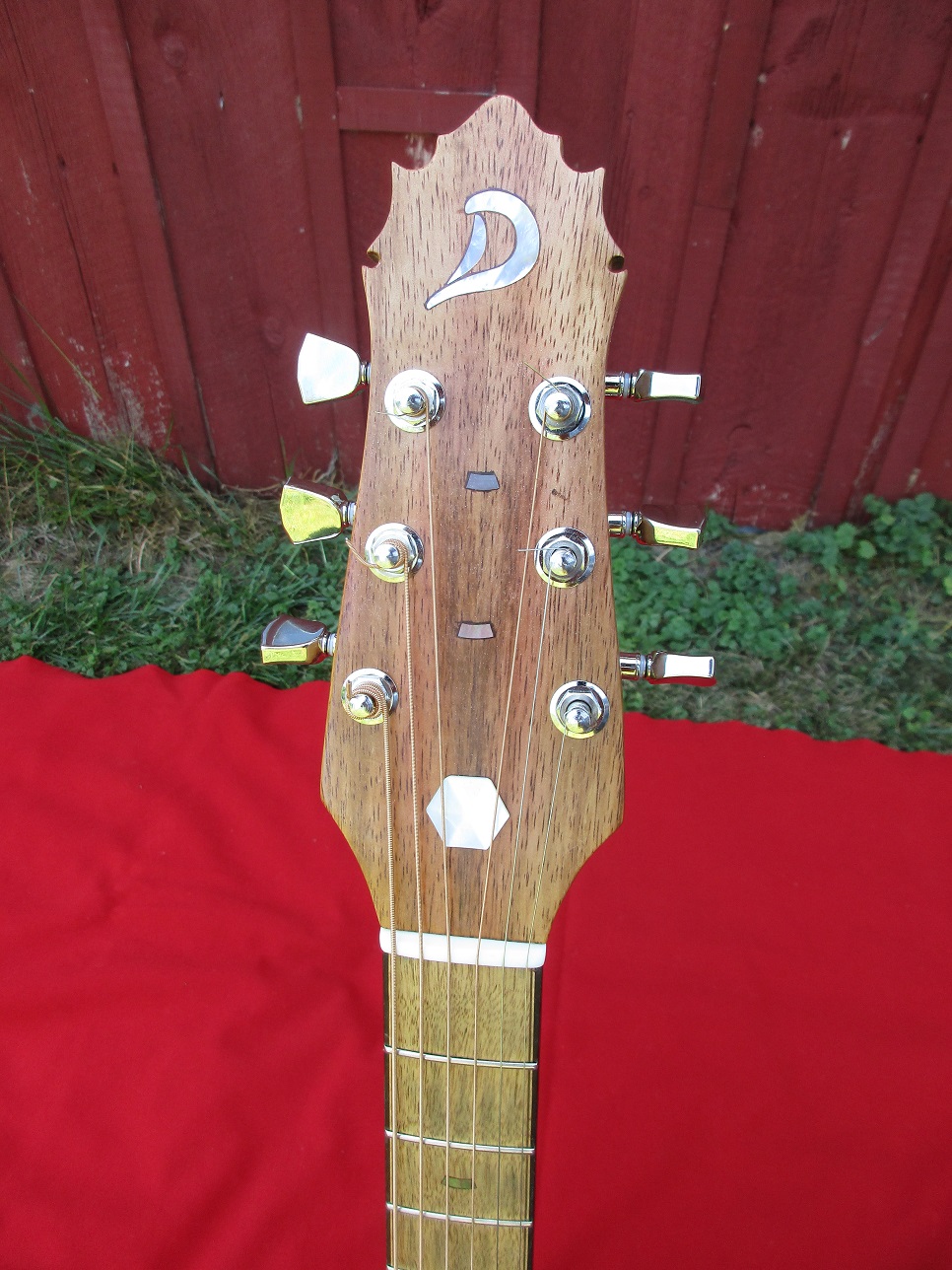 |
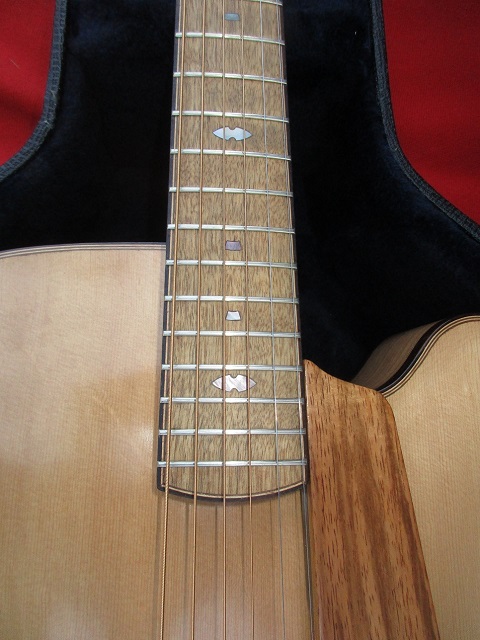 |
| The top and back are both carved to about 3/16th of an inch thick. Below left. Inside note tone braces, side braces, cherry kerfing connecting sides to back and mahogany neck and tail blocks. Each of about 100 tentelones (triangular pieces connecting sides to top) must be hand fit to the arc of the sides. Diamond shaped cleats are positioned to add reinforcement to stress points near the f-holes. The interior is shellaced to inhibit moisture exchange. All surfaces sanded to the back side of 600 grit sandpaper.
The top has only two braces and the back none. Quite different from the flat top guitar. However, the top braces must be fit to the underside of the compound surface of the top. Not as difficult as one might think with a little bit of experience. |
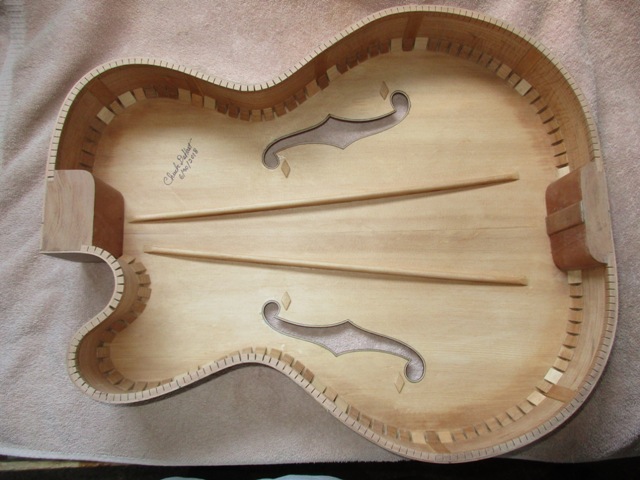 |
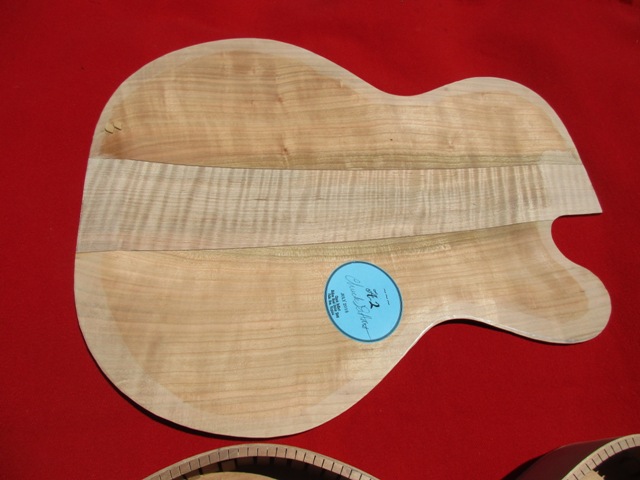 |